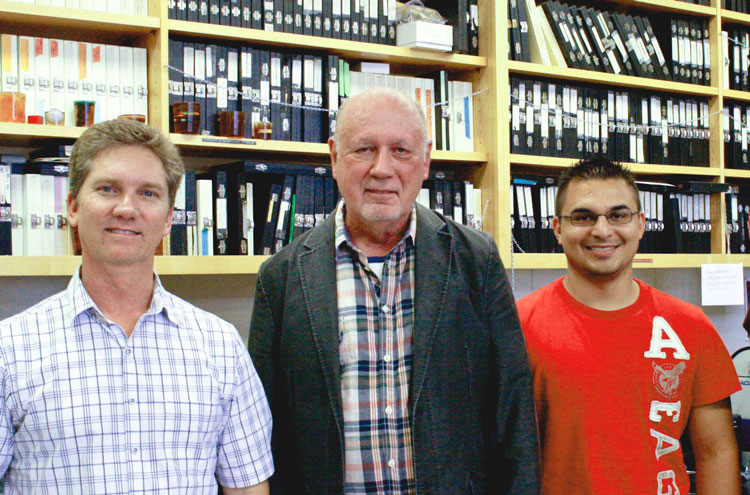Photo Above: Drs. Geoffrey Lewis and Steven Fisher and Gabriel Luna, BA, Research Specialist with the Neuroscience Research Institute.
Experimental Eye Research, Astrocyte structural reactivity and plasticity in models of retinal detachment, Gabriel Luna, Patrick W. Keeley, Benjamin E. Reese, Kenneth A Linberg, Geoffrey P. Lewis, Steven K. Fisher. Neuroscience Research Institute, University of California, Santa Barbara; Center for Bio-image Informatics, University of California, Santa Barbara. (March 2016) This study was conducted with IRRF support – Geoffrey Lewis and Steven Fisher.
ABSTRACT: Although retinal neurodegenerative conditions such as age-related macular degeneration, glaucoma, diabetic retinopathy, retinitis pigmentosa, and retinal detachment have different etiologies and patho-logical characteristics, they also have many responses in common at the cellular level, including neural and glial remodeling. Structural changes in Müller cells, the large radial glia of the retina in retinal disease and injury have been well described, that of the retinal astrocytes remains less so. Using modern imaging technology to describe the structural remodeling of retinal astrocytes after retinal detachment is the focus of this paper. We present both a review of critical literature as well as novel work focusing on the responses of astrocytes following rhegmatogenous and serous retinal detachment. The mouse presents a convenient model system in which to study astrocyte reactivity since the Müller cell response is muted in comparison to other species thereby allowing better visualization of the astrocytes. We also show data from rat, cat, squirrel, and human retina demonstrating similarities and differences across species. Our data from immunolabeling and dye-filling experiments demonstrate previously undescribed morphological characteristics of normal astrocytes and changes induced by detachment. Astrocytes not only upregulate GFAP, but structurally remodel, becoming increasingly irregular in appearance, and often penetrating deep into neural retina. Understanding these responses, their consequences, and what drives them may prove to be an important component in improving visual outcome in a variety of therapeutic situations. Our data further supports the concept that astrocytes are important players in the retina’s overall response to injury and disease.
To access this article, please CLICK HERE




